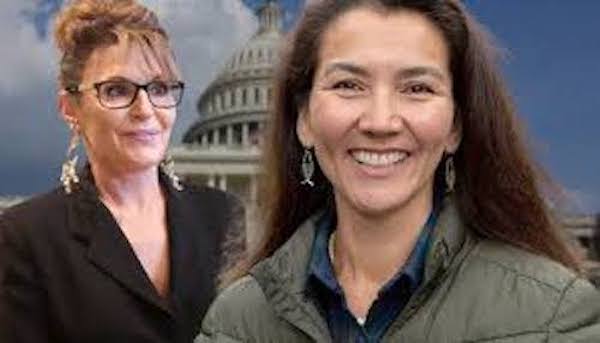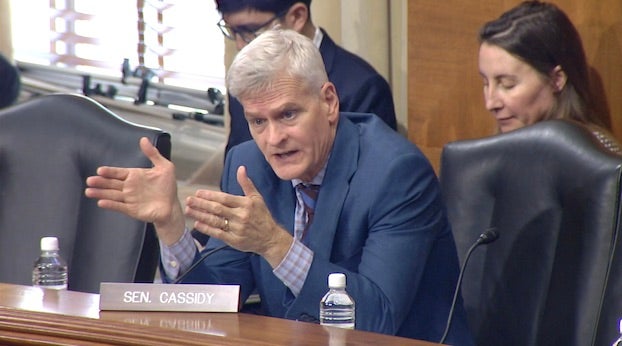Jim Beam column: Major news out of Alaska
Published 7:21 am Sunday, September 4, 2022

- Democrat Mary Peltola, right, has become the first Alaska Native and first women to serve in the U.S. House of Representatives. Pelota defeated Sarah Palin, left, in a ranked-choice voting election.tennesseestar.com
Elections in Alaska don’t hold much interest in this part of the country, but a special election there that just ended is significant for a number of reasons.
First, perhaps, it’s because Republican Sarah Palin, the late U.S. Sen. John McCain’s vice presidential running mate in 2008, lost the special election to become Alaska’s only U.S. representative in Congress. Palin is also a former governor of Alaska.
Democrat Mary Peltola, 49, who is Yup’ik, won the election and is the first Alaska Native to serve in the House and the first woman to hold the seat. She will serve the remaining months of the late Republican U.S. Rep. Don Young’s term. Young held the seat for 49 years before his death in March.
Trending
The election results came 15 days after the Aug. 16 election, in line with the deadline for state elections officials to receive absentee ballots mailed from outside the country. Ranked choice, a fairly new voting procedure, tabulations took place Wednesday after no candidate won more than 50 percent of the first choice votes.
Here is how Ballotpedia explains ranked-choice voting:
“A ranked-choice voting system (RCV) is an electoral system in which voters rank candidates by preference on their ballots. If a candidate wins a majority of first-preference votes (more than 50 percent), he or she is declared the winner.
“If no candidate wins a majority of first-preference votes, the candidate with the fewest first-preference votes is eliminated. First-preference votes cast for the failed candidate are eliminated, lifting the second-preference choices indicated on those ballots.
“A new tally is conducted to determine whether any candidate has won a majority of the adjusted votes. The process is repeated until a candidate wins an outright majority.”
In the Alaska special election, 60 percent of the voters selected the two Republicans. However, neither Peltola nor Palin ended up with 50 percent. The first choice votes of Nick Begich, another Republican, went to the two women who had been listed second.
Trending
Peltola ended up with 51.5 percent of the vote, which made her the winner. Palin ended up with 48.5 percent of the vote. All three candidates will be on the Nov. 8 general election ballot seeking a full two-year term in the U.S. House.
It comes as no surprise that Palin slammed the ranked voting process. She said it was “crazy, convoluted, confusing.” She added, “Though we’re disappointed in this outcome, Alaskans know I’m the last one who’ll ever retreat.”
The Associated Press said Peltola ran as a coalition builder while her two Republican opponents at times went after each other. Critics during the campaign also criticized Palin, questioning her commitment to Alaska because she resigned as governor in July 2009, partway through her term.
Former President Donald Trump endorsed Palin’s Alaska campaign for the House and he will no doubt do the same for the November general election.
The National Conference of State Legislatures (NCSL) said 10 U.S. cities currently use ranked-choice voting for municipal elections. New York City used the process for last year’s mayor’s race, which Eric Adams, a former police captain and borough president, eventually won.
USA Today reported on June 23, 2021, that Adams was in the lead. However, it said it might take several weeks to find out who won the Democratic primary since the voting system allowed New Yorkers to list their five preferences for mayor. The AP announced on July 6, 2021, 14 days later, that Adams won the primary.
Ranked choice wasn’t used in the Nov. 2 general election in New York City and word of Adams’ victory came later that evening. Columbia University Neighbors said New York City only uses ranked choice in primary and special elections.
The NCSL said no voting system currently certified by the U.S. Election Assistance Commission has ranked-choice capability. That leaves jurisdictions to come up with their own creative methods for doing the complicated calculations.
To date this year, the NCSL said 25 bills have been introduced in 14 states to use ranked-choice voting in elections at various levels. It added that the conference is tracking those bills and any that relate to other alternative forms of voting.
Ballotpedia said Louisiana’s electoral system for local, state, and federal offices “differs markedly” from those employed in the other 49 states. Candidates in local, state, or federal elections, regardless of political party, appear on the same ballot. The candidate who wins a simple majority (50 percent plus one vote) wins the election outright.
Louisiana isn’t likely to change that system anytime soon.





